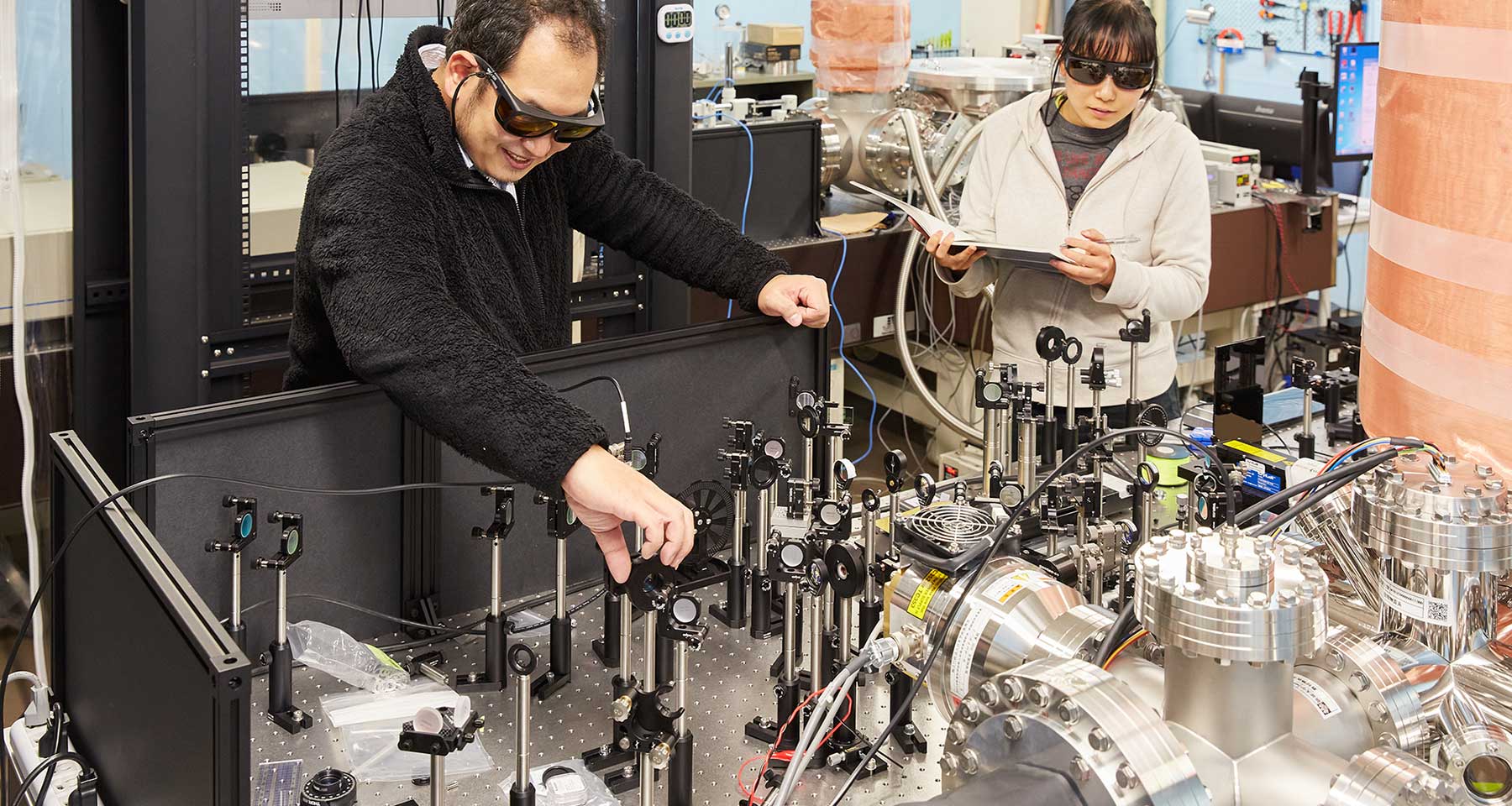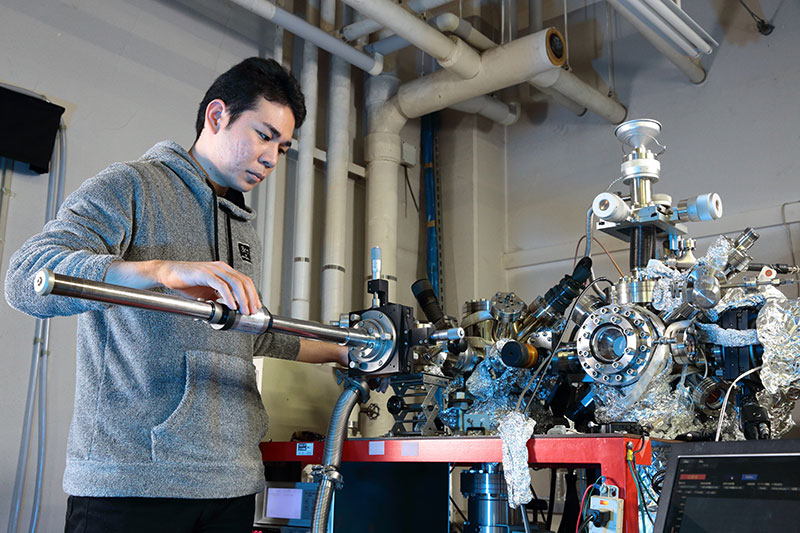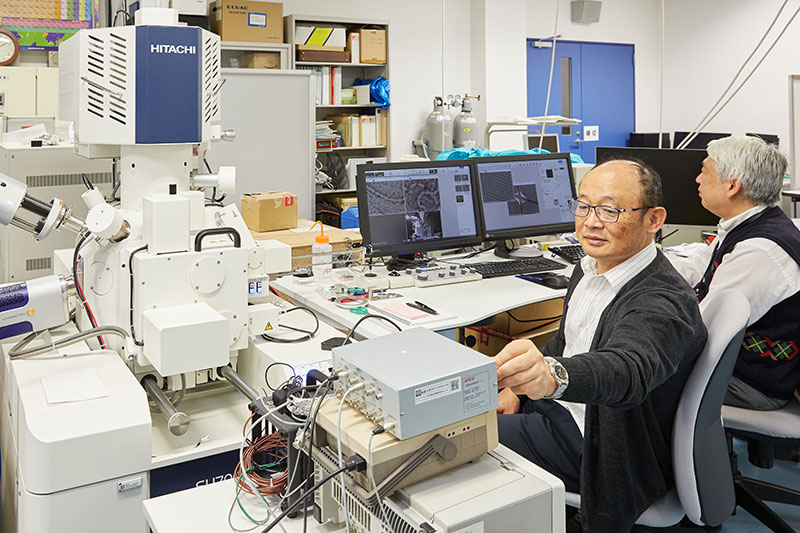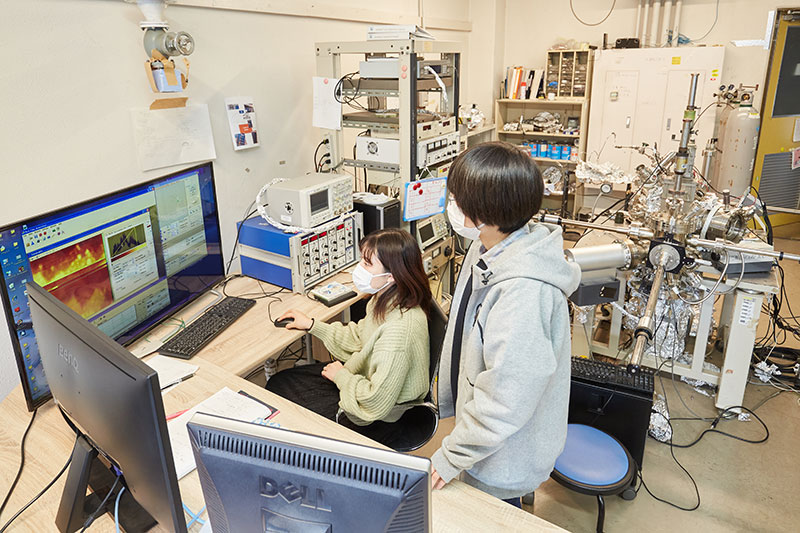
Applied Physics
Summary
In the Department of Applied Physics, education and research in “state-of-the-art measurement” are conducted, which is an important part of “Science x Technology.
Cutting-edge measurement” remains essential in a rapidly changing society. Current nanotechnology, including semiconductors, is supported by cutting-edge measurement technology. The development of new measurement technologies that enable us to see what was previously invisible opens up new science, which in turn creates new technologies. In this way, advanced measurement is truly the engine of “science x technology.
In the Department of Applied Physics, we are pursuing extreme time resolution using lasers and extreme spatial resolution using probe microscopes, and developing new measurement methods using various particle beams and radiation, thereby pioneering measurement technology in unexplored areas that will be needed by society in the future. The various laboratories handle a wide range of measurement targets, from microscopic to macroscopic, from atoms to living organisms, and through these collaborations, new research areas are being created.
As a result, we are fostering highly creative human resources who are not bound by existing specialized fields.



Introduction of Laboratory
| Laboratory Name | Faculty Name | Research |
| Nonlinear Photonics Lab(Hattori Lab) | Prof. Toshiaki Hattori | Science and engineering research using terahertz waves. Spectroscopic studies of bio-related materials, aqueous solutions, gels, etc. using terahertz waves, imaging, and development of new measurement methods using photonic structures. |
| Proteology Lab (Shiraki Lab) | Prof. Kentaro Shiraki | We study polypeptide aggregation technology. We are developing methods to control the aggregation formation of proteins and peptides for use in biotechnology and nanotechnology. |
| Ultrafast science Group (Hase・Afalla Lab) | Prof. Muneaki Hase Assistant Prof. AFALLA Jessica Pauline Castillo | Research on optical properties of semiconductors, dielectrics, and other materials using ultrashort laser pulses, especially capturing the motion of electrons and lattices on the order of 1/1000 trillionth of a second. Also, application to the creation of optical devices. |
| Nano material and Science Lab (Fujita-Ito Lab・Yoshikazu Ito lab) | Prof. Jun-ichi Fujita Associate Prof. Yoshikazu Ito | We conduct research on the synthesis and characterization of carbon-based nanomaterials such as graphene and carbon nanotubes, and their application to electronic devices. We are also developing highly sensitive measurement techniques using electron microscopes and scanning probe microscopes. |
| Scanning Electron Microscopy Lab(Sekiguchi・Souda Lab) | Prof. Takashi Sekiguchi Prof. Yasunari Souda | Fundamentals and applications of scanning electron microscopy (SEM). Research on electron optics and electron beam-material interactions, and pioneering new measurement techniques using electron beams. |
| Surface Science Lab(Sasaki・Yamada・Tsuruta Lab) | Prof. Masahiro Sasaki Prof. Yoichi Yamada Assistant Professor Ryohei Tsuruta | We use scanning tunneling microscopy, supersonic molecular beams, and field emission microscopy to study the physical chemistry of organic electronic and hydrogen technology materials at the nano-level. |
| Ultrafast structural dynamics Laboratory(Hada Lab) | Associate Prof. Masaki Hada | Molecular Animation” using ultra-short pulsed electron beams. Mainly research on elucidating the functions of photo-responsive and photo-responsive materials. |
| X-ray Imaging Optics Lab(Watanabe Lab) | Lecturer Norio Watanabe | X-ray and soft X-ray imaging optics using X-ray imaging optical elements such as zone plates and Walter mirrors. |
| Prof. Yoshiaki Yasuno | With optical measurement as our core technology, we are researching optical coherence tomography and medical tomography. | |
| Computational Condensed Matter Physics Lab(Kobayashi Lab) | Prof. Nobuhiko Kobayashi | Material design by computer simulation based on quantum theory. Theory of electronic structure of nanoscale structures such as atomic wires, molecules, and organic semiconductors; theory of charge, spin, and thermal conduction. |
| Ion Beam Application Lab(Tomita Lab) | Associate Prof. Shigeo Tomita | To elucidate various physical phenomena caused by beam irradiation using various ion beams produced by accelerators, and to develop new application technologies. |
| Hydrogen and Quantum Beam Laboratory(Sekiba Lab) | Lecturer Daiichiro Sekiba | We use synchrotron radiation and ion beam analysis to study the electronic state and atomic structure of materials that involve hydrogen and metals, such as hydrogen storage alloys. We study the mysterious behavior of hydrogen, the lightest element. |
| Plasma Physics and Engineering Lab(Esumi・Togo Lab) | Associate Prof. Naomichi Esumi Assistant Prof. Satoshi Togo | Using a mirror-type plasma machine at the Plasma Research Center, we are studying how to understand and control fusion plasmas using advanced measurement techniques. |
| Soft X-ray Microfabrication Lab(Makimura Lab) | Associate Prof. Tetsuya Makimura | Interaction of laser-generated soft X-rays with materials and its application to micro- and nano-fabrication |
| Magnetic Resonance Imaging Laboratory(Terada Lab) | Associate Prof. Yasuhiko Terada | Research on MRI (Magnetic Resonance Imaging), which can reveal the contents well without cutting. Development of compact MRI for medical diagnosis and MR microscopes for small specimens. |
